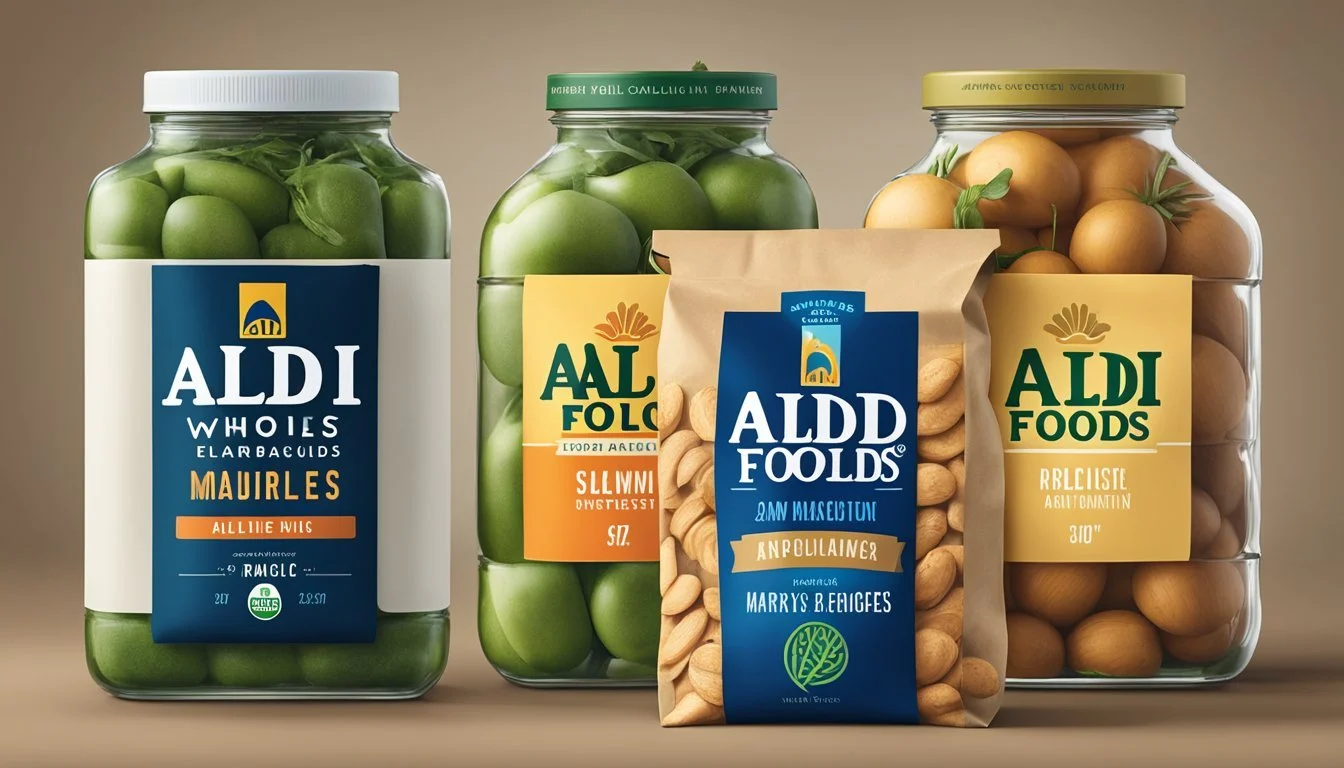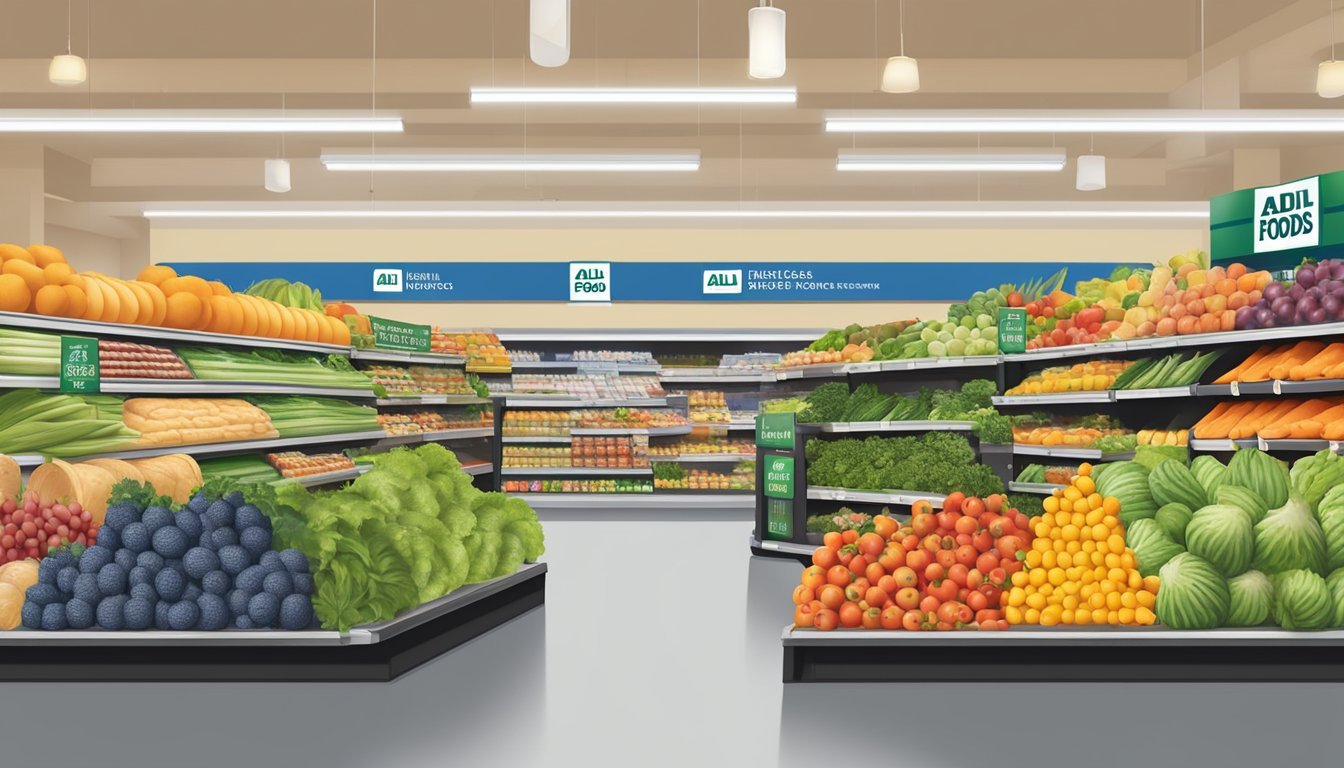Aldi vs Whole Foods Market
Comparing Value and Quality in Grocery Shopping
Part of Our Grocery Store Guide with Details on Aldi and Whole Foods Market
When comparing Aldi and Whole Foods Market, shoppers often consider both price and quality to determine which grocery store chain meets their needs. Aldi is renowned for its cost-effective approach to grocery shopping, providing a range of private-label goods that typically undercut competitors in pricing. Their streamlined shopping experience and no-frills store design contribute to Aldi's ability to keep prices low.
Whole Foods Market appeals to a different segment of consumers, focusing on organic and locally-sourced products that cater to a health-conscious demographic. Their reputation for high-quality goods means prices at Whole Foods Market are generally higher compared to those at Aldi. The store also offers a variety of specialty items, which further enhances its appeal to customers looking for unique and organic products.
Each grocery chain has carved out its own niche in the market: Aldi as the budget-friendly option for everyday essentials, and Whole Foods Market as the destination for premium, health-oriented choices. The decision on which is better often hinges on individual priorities, whether they center on saving money or investing in higher-quality food options.
Company Overviews
Aldi and Whole Foods Market are two prominent players in the supermarket industry, each with a distinct approach to retailing and customer service. They cater to different market segments within the grocery store landscape.
History of Aldi and Whole Foods Market
Aldi was founded by Karl and Theo Albrecht in 1946 in Germany, and it operates a global discount supermarket chain. It opened its first U.S. store in Iowa in 1976. Presently, Aldi runs thousands of stores worldwide with a significant presence in the U.S., focused on a no-frills, low-price strategy.
Whole Foods Market, founded in 1980 in Austin, Texas by John Mackey and his partners, represents the other end of the market spectrum. It specializes in organic and natural foods. As a supermarket chain, Whole Foods has gained a reputation for high-quality products. In 2017, Amazon acquired Whole Foods, augmenting its market presence and enhancing technological integration in the grocery shopping experience.
Business Models and Market Presence
Aldi's business model is based on simplicity and efficiency. It stocks primarily its own national brands, leading to reduced spending on marketing and logistics. Its stores are designed to be smaller than a typical supermarket, which contributes to lower overhead costs. Aldi's model allows it to sell products at very competitive prices, earning a strong following among price-conscious consumers.
In contrast, Whole Foods Market has positioned itself as a premium grocery store. Its selection includes a wide variety of organic and specialty products, often catering to health-conscious consumers willing to pay more for perceived better quality or ethical practices. Whole Foods has expanded its U.S. presence, with stores across the nation, solidifying its status as a top destination for organic food shoppers. With the backing of Amazon, Whole Foods has increased its operational efficiency and entered the online grocery delivery market.
Product Ranges
When comparing Aldi and Whole Foods Market in terms of product ranges, a customer's decision is influenced heavily by the availability of organic options, exclusive brands, and special diet accommodations.
Organic and Conventional Offerings
Whole Foods Market boasts a wide array of organic produce and meat, emphasizing high quality and freshness. They ensure a quick turnover rate which translates into fresher options for customers. Aldi also offers organic products, focusing on affordability. However, consumers may need to exercise more caution regarding the freshness of Aldi's organic selections.
Exclusive Brands and Products
Aldi is well-known for its private labels which cover a diverse range of goods, often at a lower price point compared to name brands. On the other hand, Whole Foods Market has a reputation for their premium exclusive brands that cater to shoppers looking for unique and high-quality options.
Options for Special Diets
Both grocery chains provide choices for those with specific dietary needs. Aldi has a selection of gluten-free and vegan products under their private label, making it easier for customers to shop on a budget. Whole Foods Market excels with an extensive variety of healthy food options, including gluten-free, vegan, and other special diet products, although often at a higher price point.
Pricing Strategies
The battle for better prices between Aldi and Whole Foods involves varied strategies from everyday pricing to exclusive membership benefits. Understanding these strategies helps consumers make informed decisions in their quest for savings and value.
Comparing Everyday Prices
Aldi is known for its cost-efficient approach to grocery retail. Everyday prices for items such as organic avocados and baby spinach are typically lower at Aldi compared to Whole Foods. For instance, Aldi has had packages of four organic avocados selling at $4.29, undercutting Whole Foods' price of $4.99. Such consistent cheaper prices are part of Aldi's appeal to budget-conscious shoppers.
Whole Foods, while traditionally considered a more expensive grocery choice, has adjusted prices, especially after being acquired by Amazon. The arrival of Amazon resulted in lowered produce prices at Whole Foods, although it generally remains the higher-priced option of the two. The company aims to shed its 'Whole Paycheck' image without tarnishing its reputation for premium and organic products.
Sales and Discount Policies
Both retailers run sales and discounts, but they differ in their approach to sale prices. Aldi employs the strategy of loss leaders, where certain products are sold at a loss to draw customers in, hoping they will spend more on other items. Sale prices at Aldi are often straightforward with clear discount tags.
Whole Foods has integrated Amazon Prime into its discount policies. Prime members receive exclusive Amazon Prime discounts, including special sale prices and promotions within Whole Foods stores. These perks are designed to not only encourage increased spend among existing customers but to entice new customers who are already part of Amazon's ecosystem.
Membership Programs and Benefits
Aldi does not offer a membership program, which aligns with its no-frills shopping experience aimed at keeping prices low without compromising on quality.
Whole Foods, in contrast, has leveraged Amazon Prime to offer substantial benefits to its customers. Prime members enjoy benefits like free delivery, special discounts, and even cashback when using an Amazon credit card. These membership perks are used as a strategy to justify higher prices by offering added value to the shopping experience for those willing to pay for a Prime membership.
Store Experience and Layout
When choosing between Aldi and Whole Foods Market, consumers will find significant differences in store design, checkout efficiency, and customer service quality, all of which shape the overall shopping experience.
Design and Navigation
Aldi's store layout is characterized by its simplicity and efficiency, often with a smaller footprint compared to other grocery stores. The aisles are designed to facilitate a quick shopping experience, and Aldi typically offers a limited selection of products, which reduces the time customers spend making decisions. Whole Foods Market's layout, on the other hand, focuses on spacious aisles and an aesthetically pleasing atmosphere. They offer a wider variety of products, including specialty items that cater to specific dietary needs.
Checkout Efficiency
Checkout efficiency is a key component of the shopping experience at Aldi, where the checkout process is streamlined to prioritize speed. Cashiers at Aldi are known for their fast-paced scanning, and the store encourages customers to bag their own groceries, reducing the time spent per transaction. Whole Foods Market offers traditional checkout lines, and while the process may not be as rapid as Aldi's, customers can expect a more traditional service, often with bagging assistance provided by store employees.
Customer Service Quality
In terms of customer service quality, Whole Foods Market prides itself on high standards, with employees trained to offer a friendly, helpful shopping experience. They focus on customer satisfaction and are typically available to assist with inquiries and product recommendations. Aldi operates with a more hands-off approach to customer service, aligning with their streamlined and cost-effective business model. As a result, customers may find fewer employees available on the sales floor, but the staff present at checkout are generally efficient and proficient in their roles.
Consumer Perception and Reputation
Consumer perceptions and reputations of grocery stores are pivotal in understanding their market positions. Aldi and Whole Foods Market are two contrasting brands with unique customer bases and trust levels. Exploring these aspects provides insight into what each brand stands for and how they are perceived in terms of quality and value.
Brand Loyalty and Trust
Aldi is renowned for its cost-effectiveness and simplified shopping experience, which has garnered a significant following. Surveyed area consumers consistently rate Aldi highly, contributing to its popularity score of 65% among U.S. adults at the end of 2022. This trust emanates from Aldi's reputation as a discount chain that delivers quality goods at lower prices.
On the other hand, Whole Foods Market, now owned by Amazon, traditionally caters to a demographic that values high-quality produce and organic options. Their clientele often exhibits a deep brand loyalty due to Whole Foods Market's emphasis on health and quality. Despite higher prices, Whole Foods Market's reputation has remained strong within its targeted consumer base.
Quality and Value Ratings
When it comes to quality and value ratings, consumers have distinct opinions about Aldi and Whole Foods. Aldi's strategy of offering lower-cost alternatives without compromising much on quality has led to high ratings on value scales. In a stark contrast, Whole Foods Market prides itself on a wide range of high-quality organic products, justifying its higher price points.
Customer surveys have often reflected a consistent appreciation for the overall quality found in Whole Foods Market. However, after Amazon's acquisition and subsequent price cuts on produce, the value perception of Whole Foods has seen some improvement, although their all-store average pricing is typically higher compared to Aldi.
Both Aldi and Whole Foods have built respectable reputations in their own rights—Aldi for its unbeatable prices with reasonable quality and Whole Foods Market for its premium and organic offerings, each store catering to what their surveyed customers value most in their grocery shopping experience.
Market Impact and Competition
Aldi and Whole Foods Market stand as contrasting paradigms within the grocery store industry. While Aldi exemplifies cost-efficiency and budget-friendly offerings, Whole Foods Market caters to a niche market emphasizing organic and higher-end products. Their competition with other chains and response to market trends shape the grocery landscape significantly.
Rivalry with Other Grocery Chains
Aldi's business model focuses on simplicity and efficiency, which often undercuts the prices of many competitors. They are in direct competition with Walmart and Target, known for their comprehensive offerings but higher operational costs. Meanwhile, Whole Foods, acquired by Amazon, has influenced the grocery market space by pioneering the organic food movement. Whole Foods faces rivalry from Kroger, which reported a staggering $132.5 billion in sales, highlighting its market dominance. Trader Joe’s, Market Basket, and Lidl represent part of a diverse competitive set that, along with Aldi, disrupts traditional grocery models by offering unique product assortments and value propositions.
Costco and Warehouse clubs pose a challenge with their bulk-sales model.
Dollar stores have emerged as an unexpected competitor, edging into the grocery sector.
Effects of Market Trends on Both Stores
Market trends play a pivotal role in dictating the operational strategies of both Aldi and Whole Foods. Aldi has managed to maintain a growth trajectory by employing a limited assortment of private-label brands and showcasing a no-frills shopping experience. In contrast, Whole Foods Market has leveraged the trend towards health-consciousness and sustainability. With the backing of Amazon's technological prowess, Whole Foods has renovated traditional grocery shopping into a more digital and customer-centric experience.
Both stores are impacted by broader industry trends such as the growing demand for organic products, the rise of e-commerce, and shifting consumer behavior post-pandemic. Aldi and Whole Foods Market adapt by implementing competitive pricing strategies and enhancing customer experience while maintaining their unique brand propositions.
Unique Services and Features
Aldi and Whole Foods Market cater to distinct consumer needs through their specific services and features. Each chain offers different approaches to grocery delivery, online shopping, and in-store uniqueness, from savings-focused models to premium organic assortments.
Grocery Delivery and Online Shopping
Aldi provides cost-effective grocery options with a growing emphasis on online shopping convenience. Though their online presence was historically limited, Aldi now partners with delivery services like Instacart to offer customers home delivery options for their groceries, including common items and organic products.
In contrast, Whole Foods Market, as an Amazon-owned chain, integrates seamlessly with Amazon's infrastructure. This means Prime members can benefit from services like Prime Now for fast grocery delivery and exclusive discounts. Whole Foods also touts a more expansive online shopping platform, aligning with Amazon's expertise in the e-commerce space.
In-Store Specialties and Services
Aldi:
Stands out for its efficiency; items are typically displayed in their original shipping boxes, which helps reduce costs.
In-store options are designed to streamline the shopping experience, thereby prioritizing cost savings over additional services.
Whole Foods Market:
Offers an expansive selection of prepared foods, appealing to customers seeking ready-to-eat meals.
Emphasizes organic products and a diverse array of special dietary options, positioning itself as a destination for health-conscious shoppers.
Both stores showcase a clear difference in their service models. Aldi is focused on simplicity and savings, while Whole Foods Market delivers a more premium service, including a wide area options for specialty and organic items.
Conclusion and Recommendations
When deciding between Aldi and Whole Foods Market, consumers should consider their shopping priorities. Aldi is the go-to choice for budget-conscious shoppers seeking to save money without compromising on quality. Their overall prices for general products often reflect amazing values, especially for staple items.
Whole Foods Market, on the other hand, is ideal for those who prioritize a wide variety of organic and natural options. Shoppers looking for healthier foods, including fresh fruits and veggies, will find an abundance of options like baby carrots, bananas, apples, and premium dairy products. While price tags may be higher, the store specializes in high-quality fresh produce, meats, and unique produce items.
For families, the choice may hinge on the need for bulk purchases versus specialty items. Aldi's smaller package sizes might be a limitation for larger families, whereas Whole Foods offers greater variety albeit at a higher cost.
To summarize:
Aldi: Best for those looking to stretch their grocery budget while enjoying quality products.
Whole Foods: Suited for those who prefer a wide selection of organic, natural foods, and specialty items, albeit at a premium.
Shoppers should assess their family's needs, dietary preferences, and financial constraints when choosing between these two grocery stores. Shopping at both stores on occasion could also be a strategic way to combine cost savings from Aldi with the specialized offerings of Whole Foods.
Remember, the right choice varies per individual or family needs, but both stores have their strengths that can cater to different shopping preferences.









